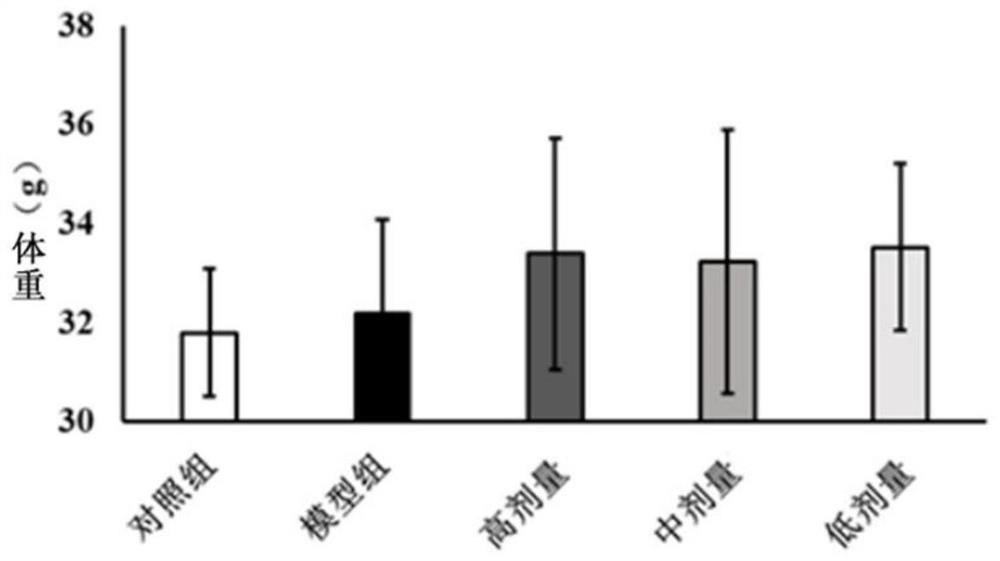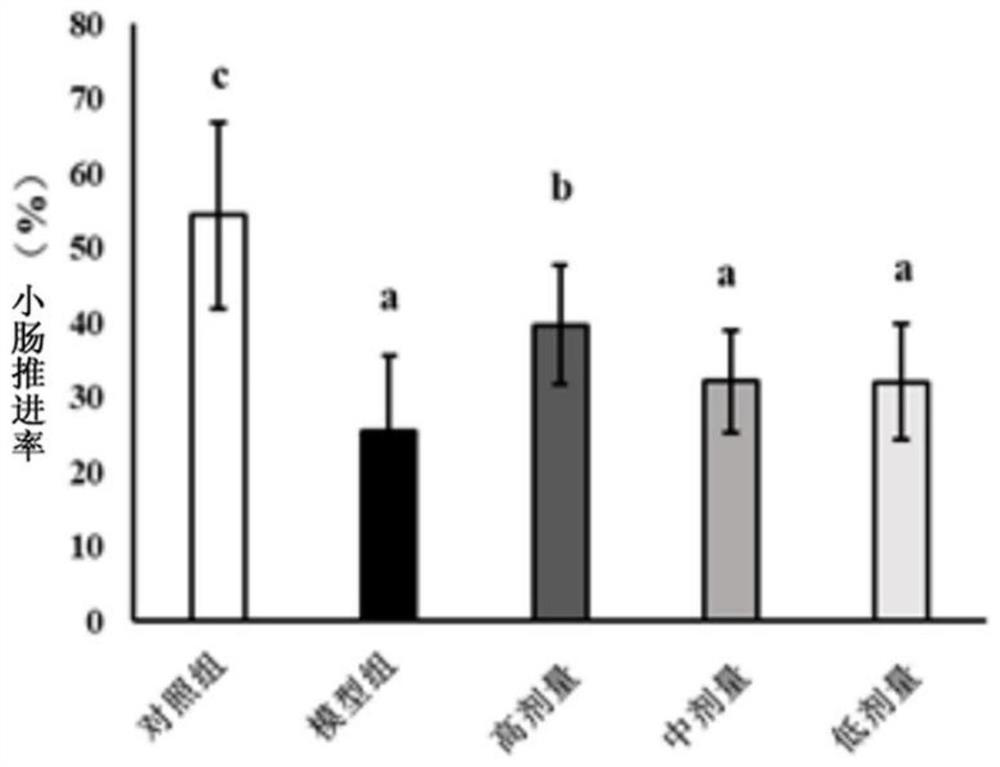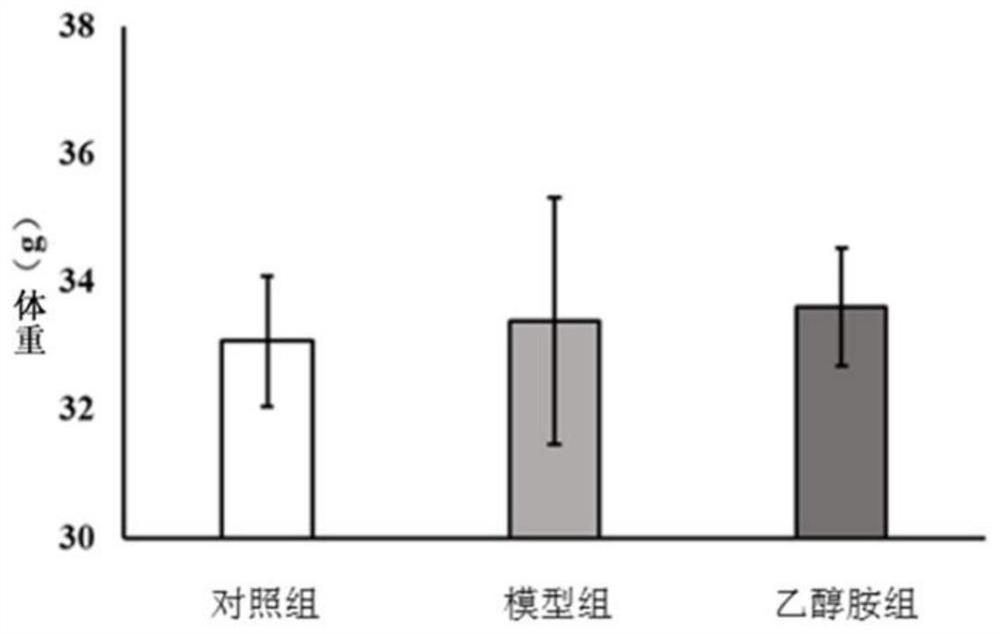Application of ethanolamine in preparation of composition for preventing, relieving or treating constipation
A technology for treating constipation and ethanolamine, applied in the field of biomedicine, can solve problems such as intestinal dysfunction, adverse reactions, irritation, etc., and achieve the effects of improving constipation, improving the propulsion rate of the small intestine and the number of defecation grains
- Summary
- Abstract
- Description
- Claims
- Application Information
AI Technical Summary
Problems solved by technology
Method used
Image
Examples
Embodiment 1
[0028] Embodiment 1——establish constipation mouse model
[0029] In this example, a constipation mouse model with slowed intestinal transit speed was established, and compound diphenoxylate was used as a modeling agent for the slowed intestinal motility model in mice.
[0030] Compound diphenoxylate consists of diphenoxylate hydrochloride and atropine sulfate. Diphenoxylate hydrochloride can act on the μ-type opioid receptor (μopioid receptor), inhibiting the release of ACh; atropine sulfate can act on mAChR, inhibiting the combination of ACh and mAChR, thereby inhibiting the activity of ACh. The above two substances jointly affect the intestinal ACh, and finally achieve the purpose of inhibiting the intestinal transit rate.
Embodiment 2
[0031] Embodiment 2——Measurement of small intestine propulsion rate
[0032] Forty 34-36g male KM mice (SPF grade, purchased from Weitong Lihua) were randomly divided into 5 groups, namely control group, model group and high, medium and low dose ethanolamine groups, 8 mice in each group. During the rearing period, the ambient temperature was kept at 22-24° C., the humidity was 50%-55%, a 12h / 12h day and night cycle was performed, and water and food were freely available. 16 hours before the start of the formal experiment, the five groups of mice were fasted without water.
[0033] The high-, medium-, and low-dose ethanolamine groups were given 1936, 387.20, and 77.44 mg / kg·BW ethanolamine aqueous solution (mixed with a vortex oscillator before use), respectively, and the model group and the control group were given an equal volume of normal saline solution; 30min Afterwards, the model group and the ethanolamine group were intragastrically administered compound diphenoxylate s...
Embodiment 3
[0037] Embodiment 3 - the impact of ethanolamine on the number of defecation grains
[0038] According to the results of small intestine propulsion rate in Example 2, the effective ethanolamine dose was obtained by screening, and the number of defecated particles and intestinal neurotransmitter content were evaluated with ethanolamine at this dose concentration (the effective ethanolamine dose was 1936 mg / kg·BW).
[0039] Twenty-four 34-36g male KM mice (SPF grade, purchased from Weitong Lihua) were randomly divided into 3 groups, namely control group, model group and ethanolamine group, with 8 mice in each group. During the rearing period, the ambient temperature was maintained at 22-24°C, the humidity was 50%-55%, a 12h / 12h day and night cycle was performed, and water and food were freely available. At the beginning of the experiment, the compound diphenoxylate solution (diphenoxylate hydrochloride 20mg / kg BW, atropine 0.2mg / kg BW; mixed with the previous vortex shaker) was ...
PUM
 Login to View More
Login to View More Abstract
Description
Claims
Application Information
 Login to View More
Login to View More - R&D
- Intellectual Property
- Life Sciences
- Materials
- Tech Scout
- Unparalleled Data Quality
- Higher Quality Content
- 60% Fewer Hallucinations
Browse by: Latest US Patents, China's latest patents, Technical Efficacy Thesaurus, Application Domain, Technology Topic, Popular Technical Reports.
© 2025 PatSnap. All rights reserved.Legal|Privacy policy|Modern Slavery Act Transparency Statement|Sitemap|About US| Contact US: help@patsnap.com



